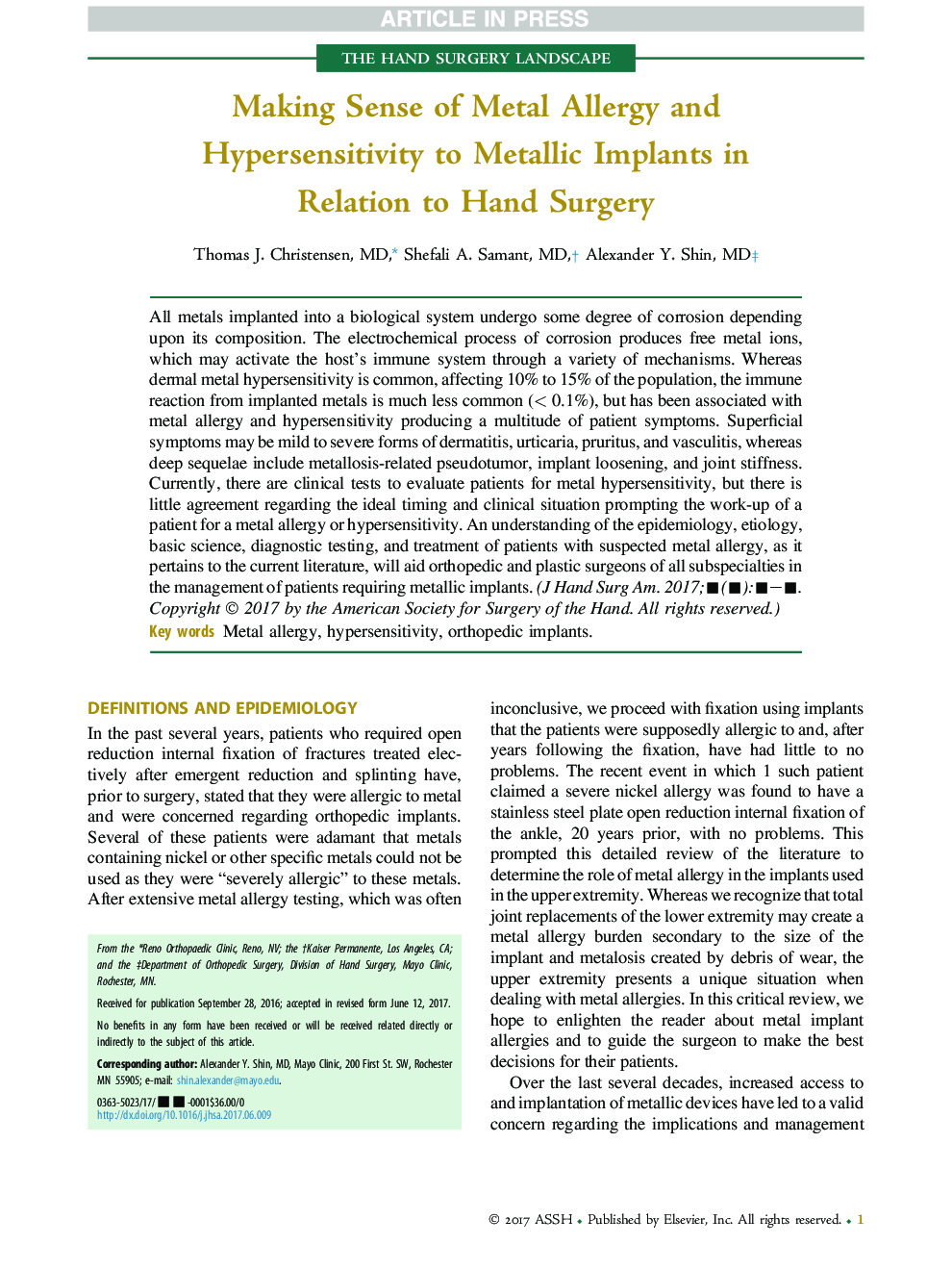| Article ID | Journal | Published Year | Pages | File Type |
|---|---|---|---|---|
| 5709605 | The Journal of Hand Surgery | 2017 | 10 Pages |
Abstract
All metals implanted into a biological system undergo some degree of corrosion depending upon its composition. The electrochemical process of corrosion produces free metal ions, which may activate the host's immune system through a variety of mechanisms. Whereas dermal metal hypersensitivity is common, affecting 10% to 15% of the population, the immune reaction from implanted metals is much less common (< 0.1%), but has been associated with metal allergy and hypersensitivity producing a multitude of patient symptoms. Superficial symptoms may be mild to severe forms of dermatitis, urticaria, pruritus, and vasculitis, whereas deep sequelae include metallosis-related pseudotumor, implant loosening, and joint stiffness. Currently, there are clinical tests to evaluate patients for metal hypersensitivity, but there is little agreement regarding the ideal timing and clinical situation prompting the work-up of a patient for a metal allergy or hypersensitivity. An understanding of the epidemiology, etiology, basic science, diagnostic testing, and treatment of patients with suspected metal allergy, as it pertains to the current literature, will aid orthopedic and plastic surgeons of all subspecialties in the management of patients requiring metallic implants.
Related Topics
Health Sciences
Medicine and Dentistry
Orthopedics, Sports Medicine and Rehabilitation
Authors
Thomas J. MD, Shefali A. MD, Alexander Y. MD,
